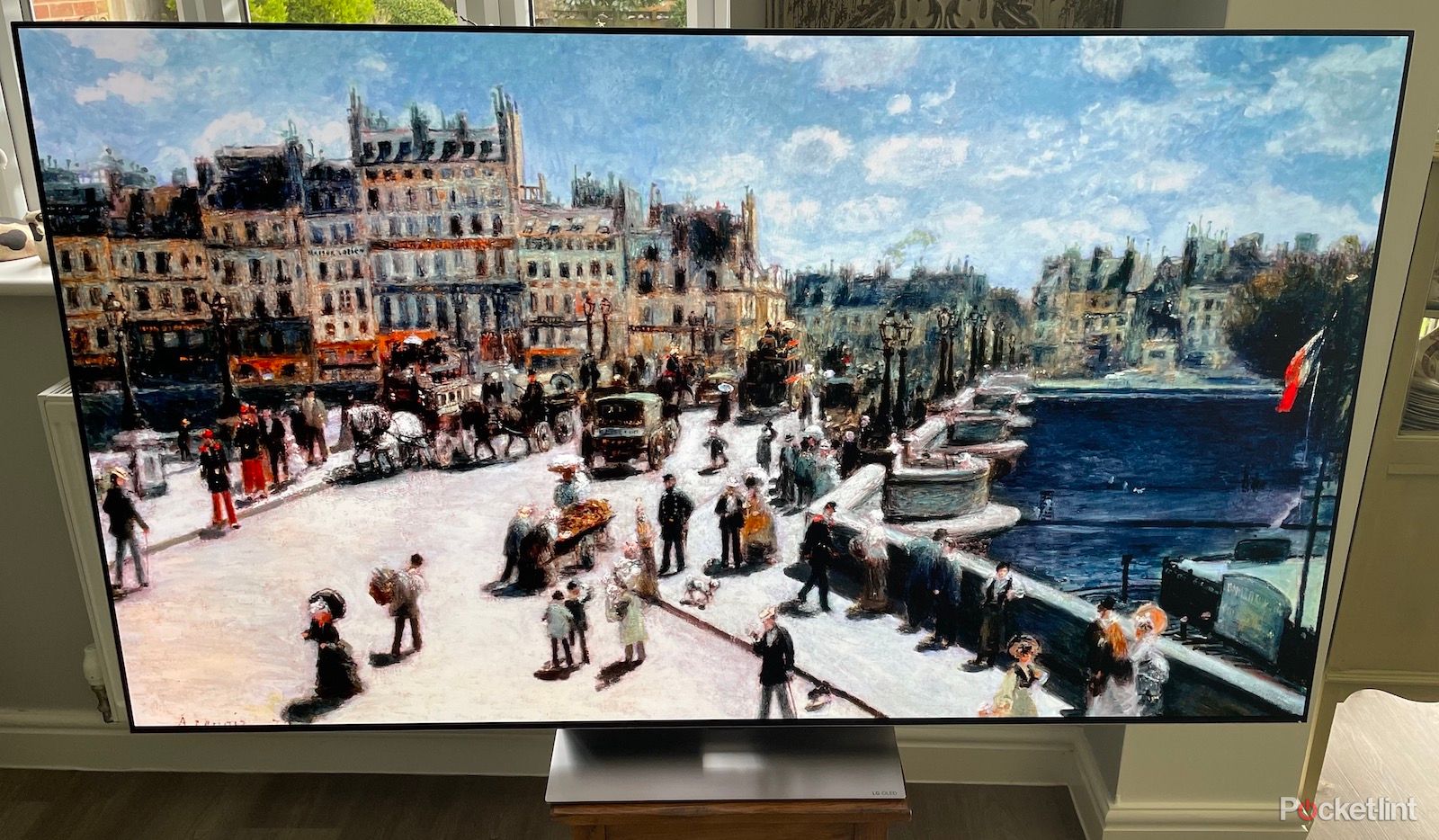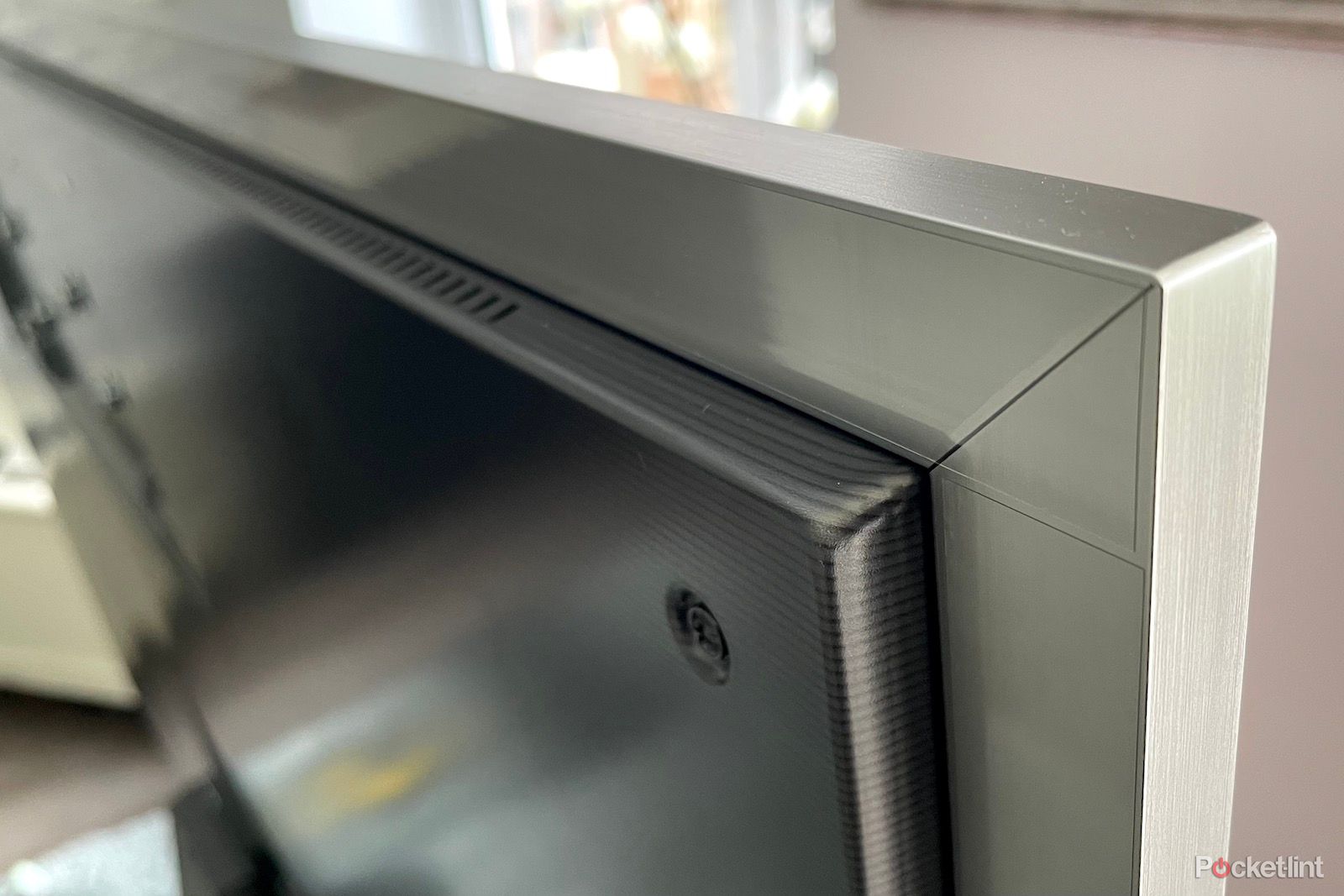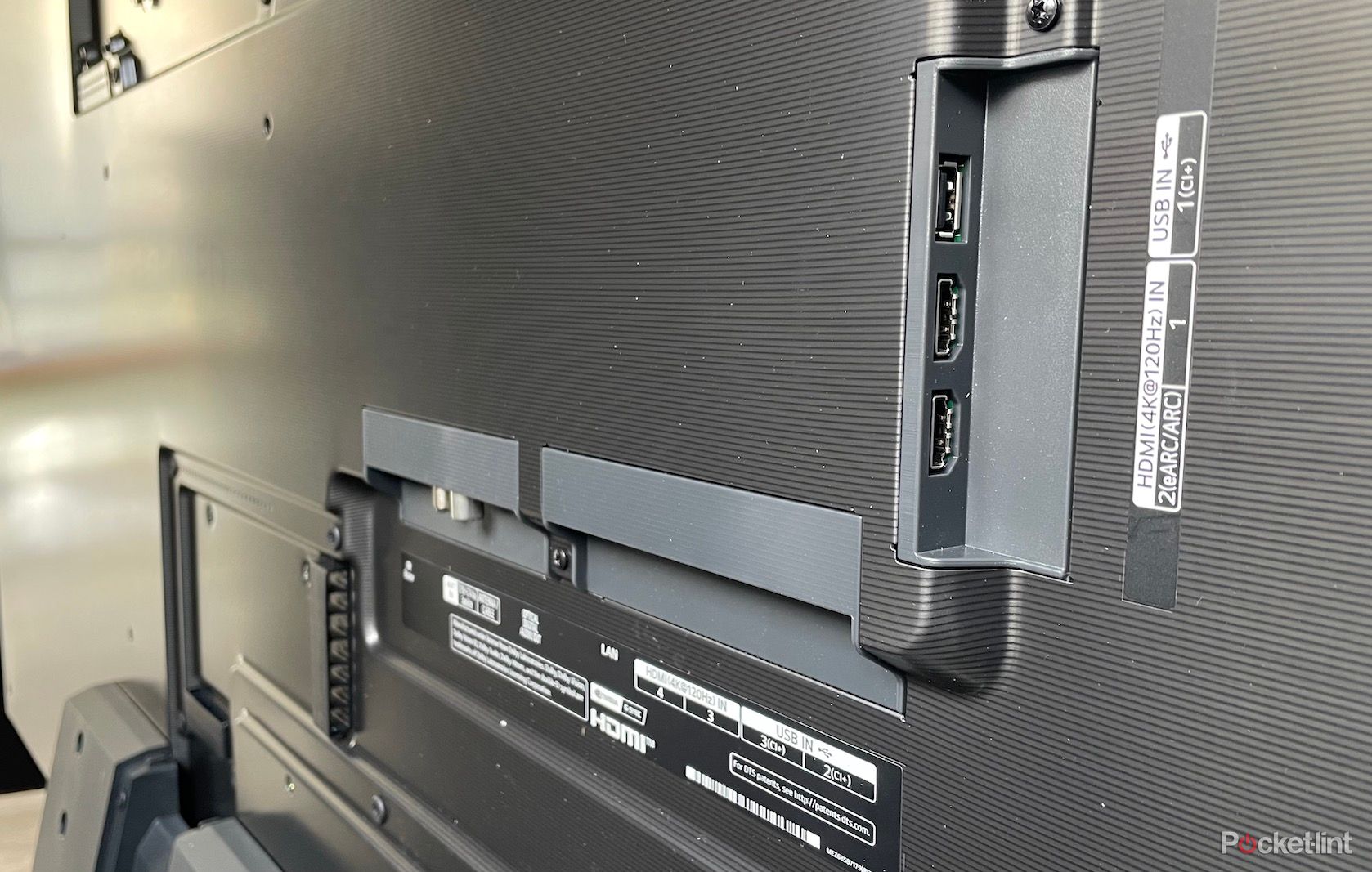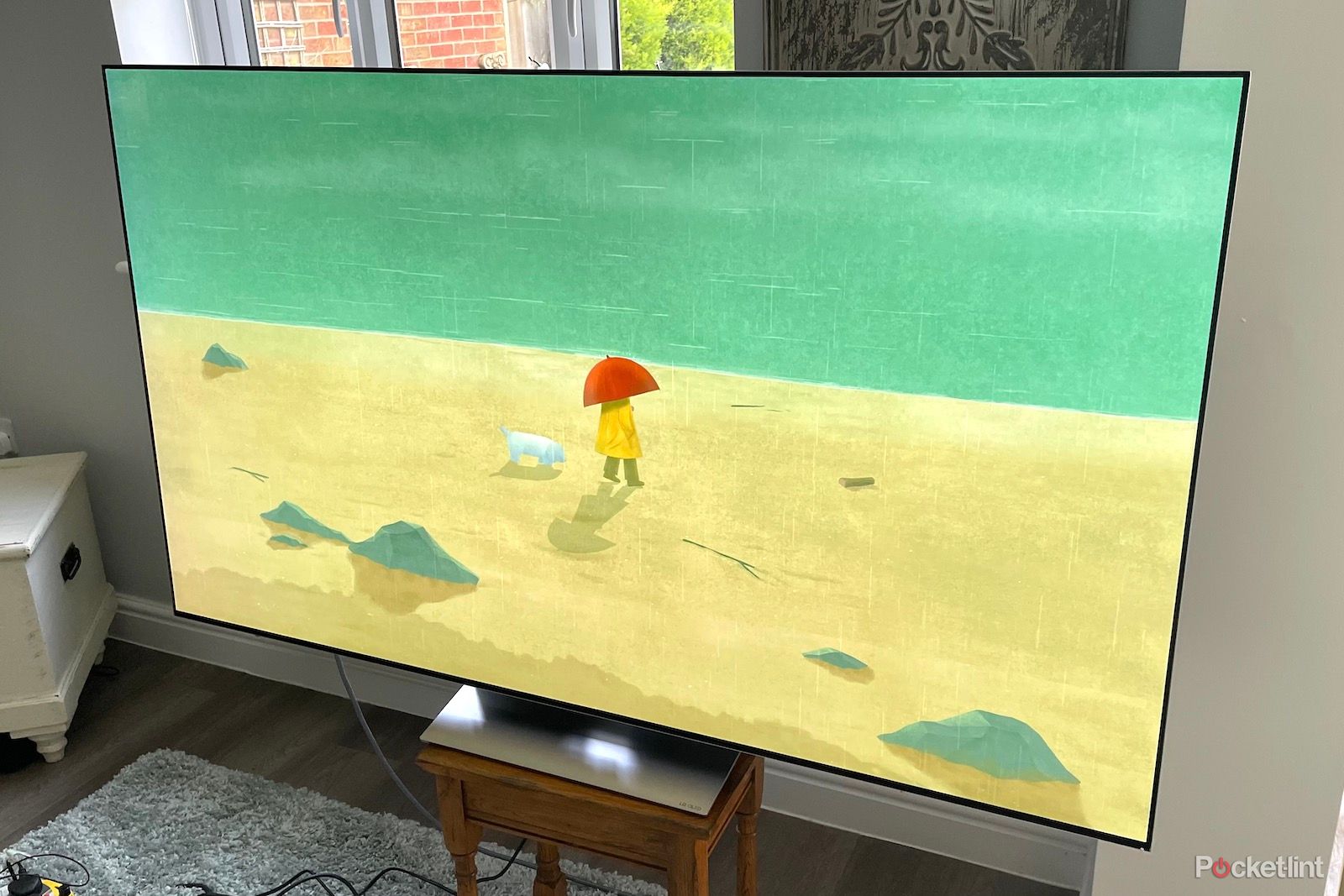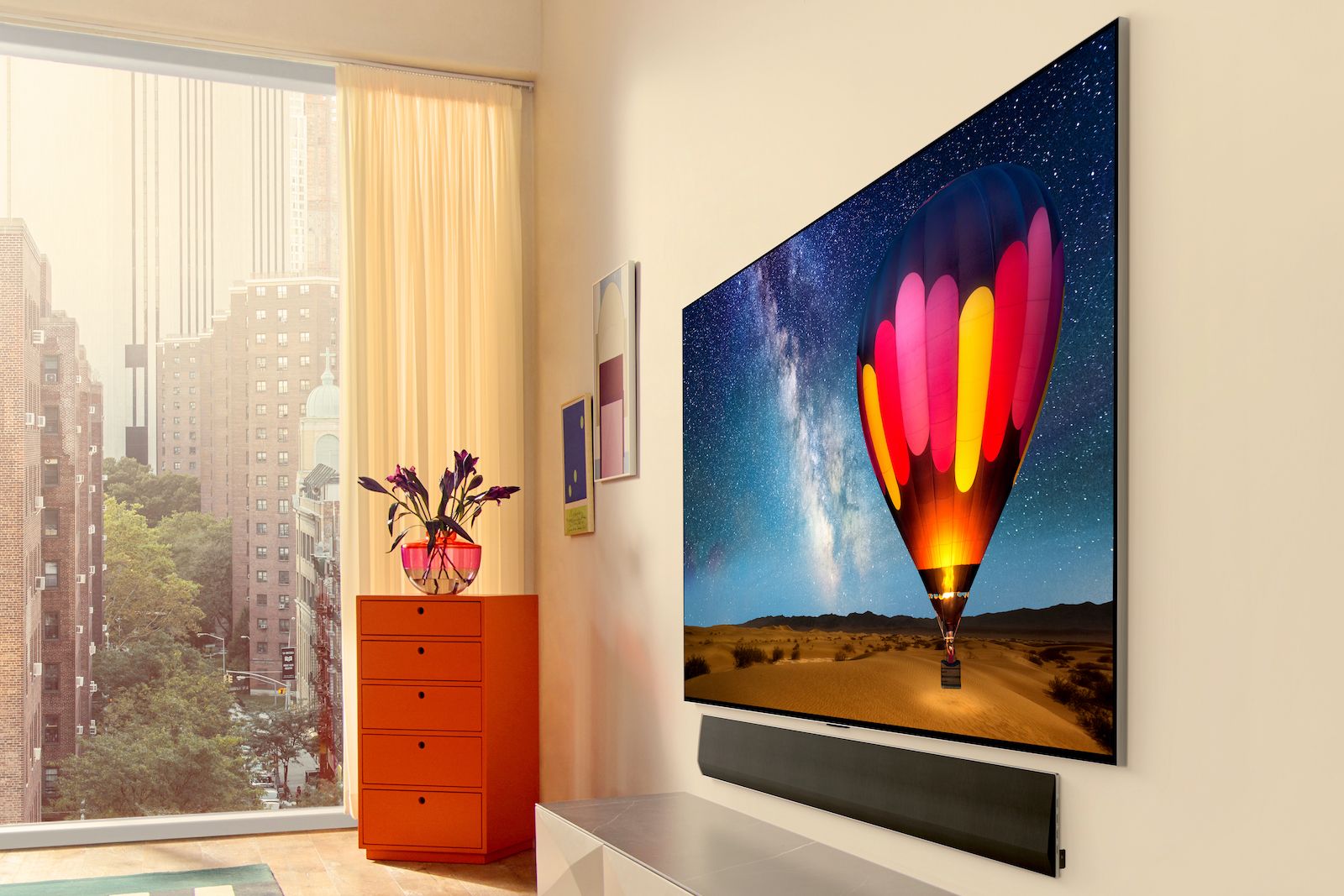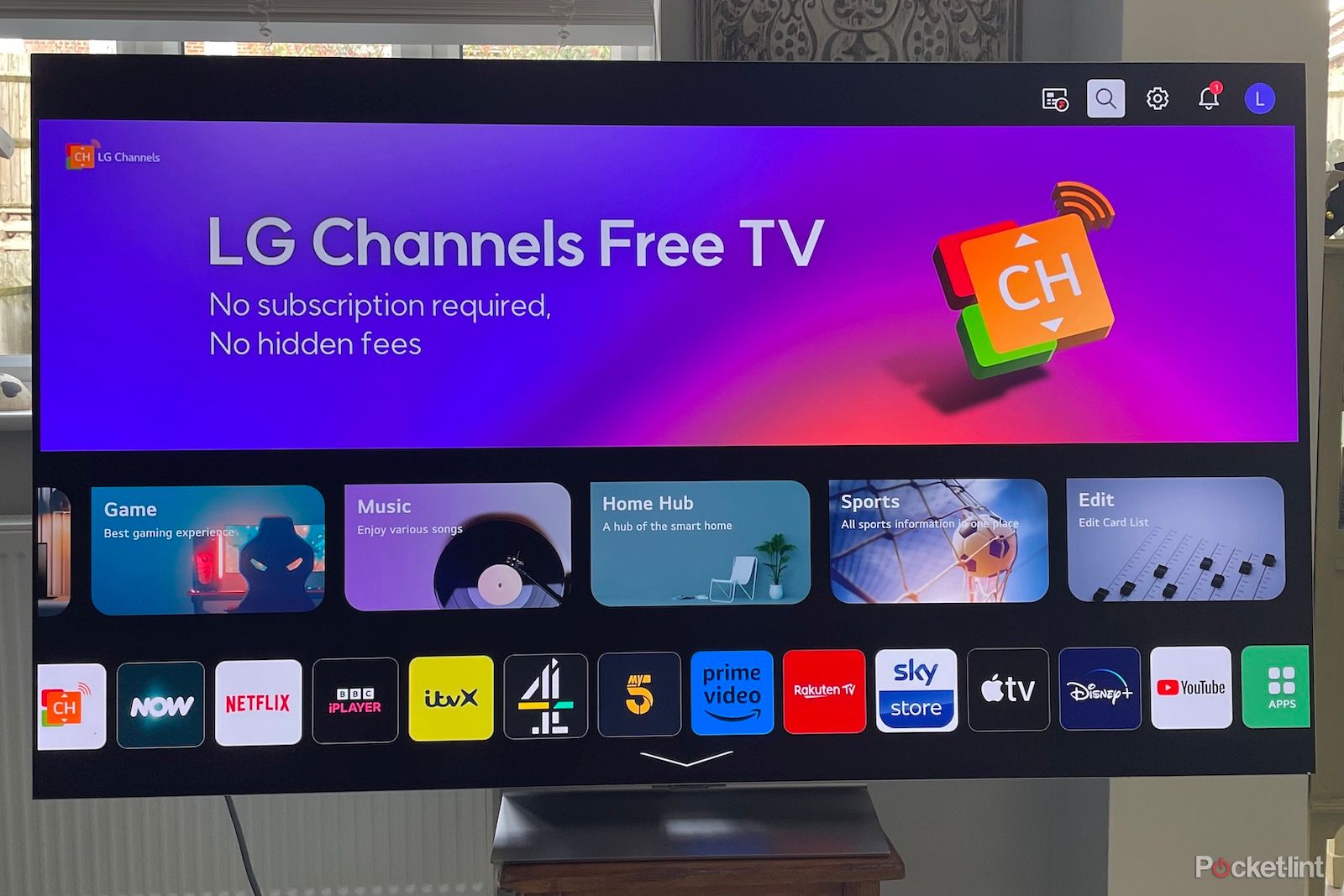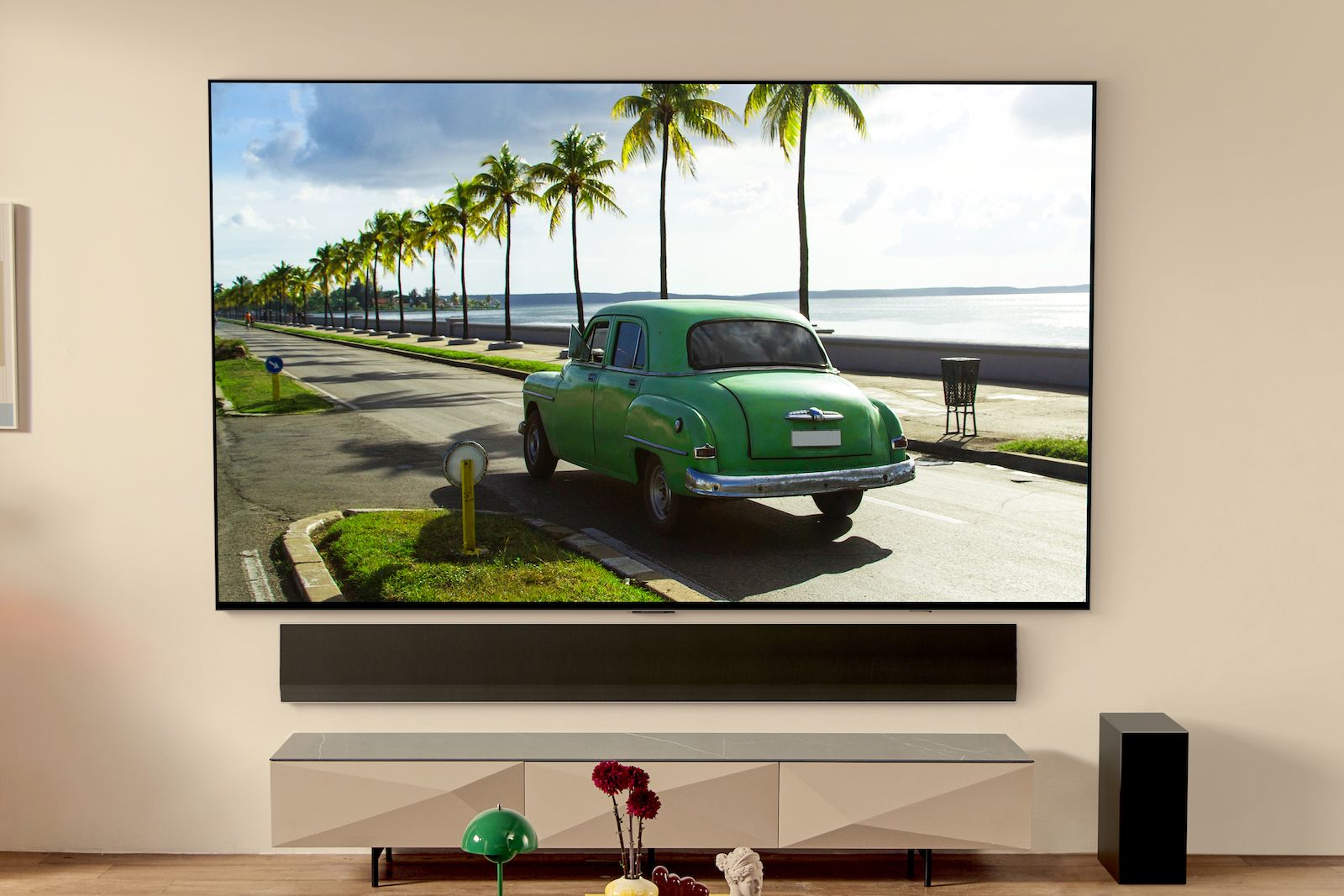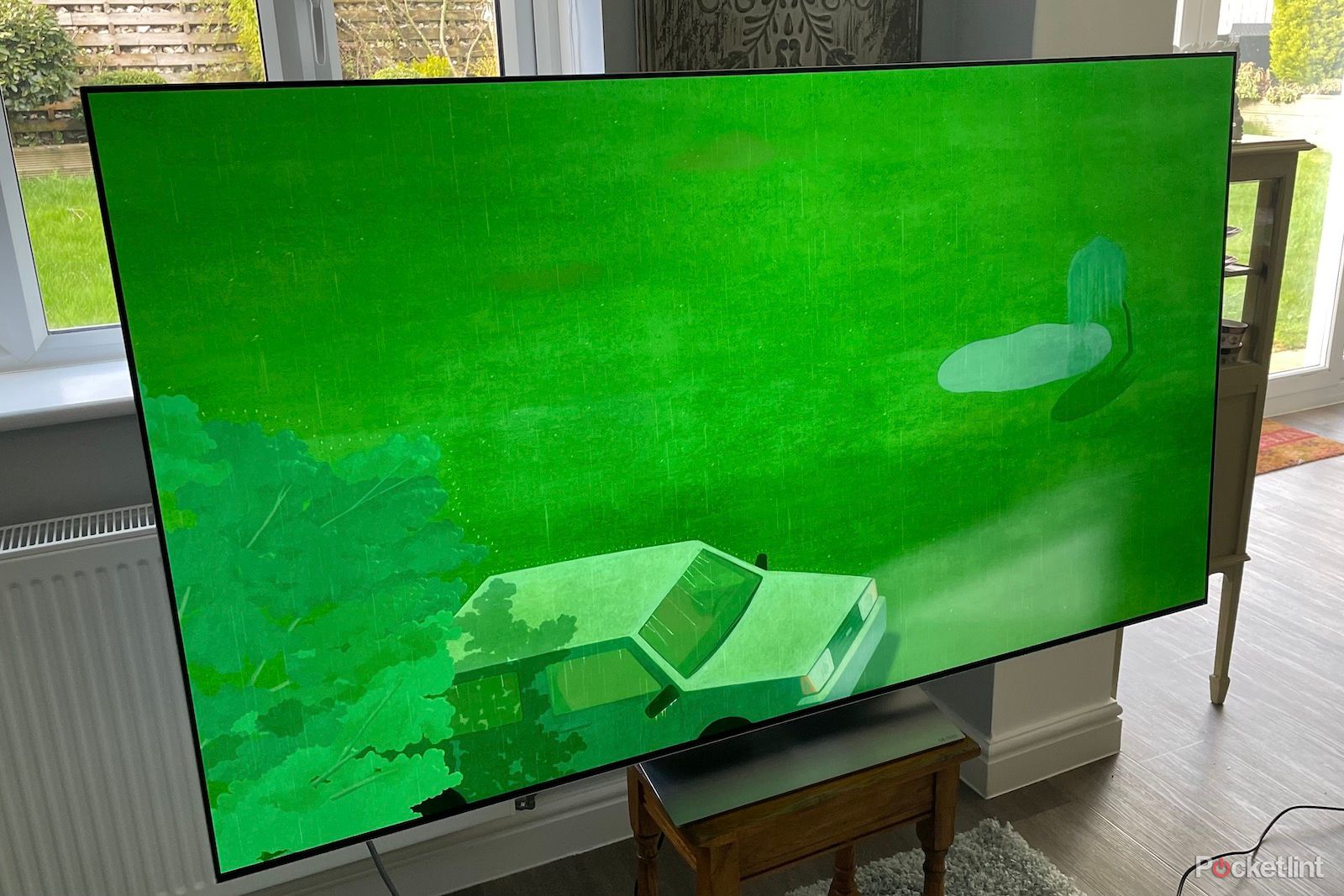While OLED TVs have managed to tuck enough annual tweaks under their belts over the years to have arrived at a place now where they’re beloved - even revered - by many home cinema fans, we’ve never seen OLED jump forward as much in a single generation as it does with LG's new G3 range.
The Micro Lens Array (MLA) technology that makes this leap possible helps the G3 pump out more brightness than any OLED screen has ever managed before - so much more brightness, in fact, that the results transform the whole 4K TV landscape.
The LG G3 range is available in 55, 65, 77 and 83-inch versions, with a 97-inch version to come later - though note that the 83- and 97-inch sizes don’t benefit from the MLA technology that so transforms the other screen sizes.
The 65-inch G3 (OLED65G3) under scrutiny here costs £3,499 in the UK, and $3,299.99 in the US. It doesn't ship with a desktop stand, though, so if you want one of those you will need to add £100/$100 or so to the TV's price.
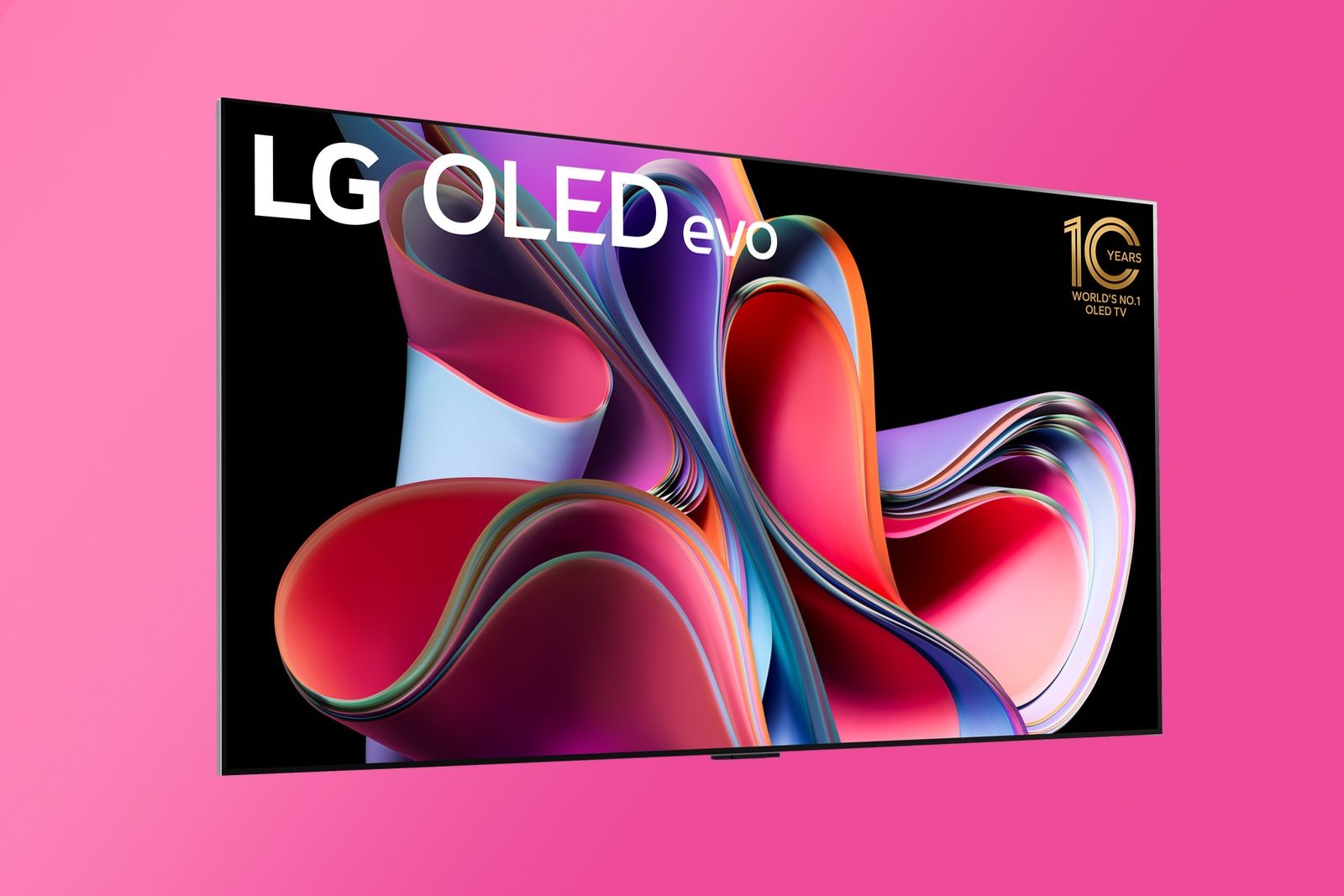
LG G3 OLED evo
The LG G3 doesn’t just take OLED technology to another level - it elevates it to a whole new universe. The extra brightness it delivers without damaging its traditional contrast strengths makes HDR look incredible, and finally sees OLED parking its tanks on LCD's lawn when it comes to delivering the picture goods - even in bright rooms.
- The brightest OLED pictures ever
- Sensational contrast and black levels
- Fantastic gaming support
- Disappointing sound quality
- Very slight desaturation in dark scenes
- Desktop stand costs extra
Design
- New wall-hanging focused design
- Optional desktop stand
- 4 x HDMI inputs with full 2.1 feature support
- Wi-Fi; Bluetooth; Airplay 2
The G3 looks very similar indeed to its 2022 G2 predecessor. This is great news if you're wanting to hang your TV, as its Gallery design is ultra slim (less than 2.5cm deep), impressively lightweight and has a Zero Gap mounting system that makes it pretty much peerless as a wall-mounted option.
If you don't want to wall mount the OLED65G3, you need to know that the set doesn't ship with a desktop stand. So you'll have to buy the optional one, likely adding £100/$100 or so to TV's cost. This stand is at least well-made and centrally mounted, though - and since the stand's mounting points follow VESA standards, you could potentially add a cheaper alternative stand from a third-party manufacturer if you wished.
Connections are all built into the TV, rather than using an external connections box as might have been a nice option for a TV so focused on wall mounting. The connections are pleasingly numerous, though, including in four HDMI ports that all support the full 48Gbps bandwidth possible with the latest 2.1 standard - meaning they all support the latest console and PC gaming features.
Three USB ports are on hand for both playing multimedia files and attaching USB storage devices, plus there's an Ethernet port for wired network access. Most households will prefer to take advantage of the TV's Wi-Fi connectivity, though, which is backed up by both Bluetooth and Apple AirPlay 2.
As with previous LG TVs, the G3 can pass Dolby Atmos on to AVRs and soundbars using either HDMI eARC or LG’s optional extra wireless WOWCast system. LG has impressively extended its HDMI passthrough capability for the G3, though, so that it can also cater for all forms of DTS audio, including DTS:X.
The G3 ships with one of LG's regular 'Magic' remote controls. While some sort of premium metallic finish might have been nice to go with the G3’s premium status, the handset still feels pleasingly weighty, fits comfortably in the hand, and uniquely offers four ways of using it: normal navigation buttons, a spinning button you can use for quickly rushing up and down vertical menus on the screen, a mic for voice instructions and, uniquely, a point-and-click system where you literally just point at an option you want to select on screen and hit enter.
Features
- 4K OLED TV with MLA technology
- Alpha 9 Gen 6 processor
- DTS, Dolby Atmos and AI Sound Pro audio support
- Extensive gaming support across four HDMIs
Naturally the LG G3 ticks the key basic boxes we'd expect of any new premium LG OLED TV. So, for starters, it delivers its pictures using a native 4K pixel count of self-emissive pixels. It also gets one of LG's so-called evo panels, launched with last year's G2. This packs brightness-enhancing Deuterium materials, and sports a full-on heat sink layer to help it dissipate the warmth generated by its unusually bright lighting. This is essential to reducing the chance of such a bright OLED screen suffering from permanent image retention, or screen burn.
However, what makes the G3 unprecedented at the time of writing is its new Micro Lens Array technology.
Unique to the G3 series in LG's range, MLA technology involves applying a huge number of tiny lenses just behind the screen that focus the light coming from the OLED pixels towards the viewer more directly, reducing the amount of light that gets lost on its journey through the OLED panel and out into your living room.
The beauty of this approach to bolstering OLED brightness is that it doesn't depend on more power (in fact, the G3 runs slightly more efficiently than 2022's G2 in most configurations) - something which should also help limit the G3's susceptibility to screen burn.
LG claims that its new MLA tech can deliver as much as 70 per cent more brightness than regular OLED TVs - and at least 30 per cent more brightness than even its premium evo panels from 2022. Measuring the OLED65G3 confirms that these suggested numbers from LG aren’t just 'out there' marketing hype either. We found the screen capable of reaching 1400 nits and more on a white HDR window covering 10 per cent of the screen - a rise of at least 400 nits beyond any OLED we’ve seen from LG before. This crushes the usual annual OLED brightness increases of 50 nits or so (if we’re lucky).
The OLED65G3’s full-screen brightness measures up significantly too, now comfortably tracking above 200 nits.
LG has backed up the transformational new brightness of its debut MLA panel with another overhaul of its Alpha 9 processing system. Now into its sixth generation, the improvements ushered in by this new processor include improved upscaling of sub 4K sources (by better detecting the difference between natural grain and unwanted source image noise), better tone mapping for HDR playback (that now breaks the image down into 20,000 separate analysis zones versus the previous 5,000), and two new object identification and manipulation tools for making images resemble more closely the way your eyes perceive the real world.
Note, though, that some of the G3's new processing features are only active with the brand's AI Picture Pro option in action, and that this system won't work (for complicated copyright reasons) with content that's copy protected by the HDCP system.
The Alpha 9 Gen 6 processor also enhances the G3's audio talents, remarkably claiming to upscale even plain stereo inputs to a 9.1.2-channel arrangement. The OLED65G3's audio ambitions also include built-in Dolby Atmos decoding, as well as an improved WOW Orchestra feature that lets the TV share both its own speakers and its advanced audio processing with compatible LG soundbars.
LG has earned a reputation over recent years for being ahead of the curve when it comes to catering for gamers with its premium TVs, and that reputation continues with knobs on with the G3. There’s support across all four HDMIs for 4K/120Hz and VRR feeds, with the VRR support extending to the AMD Freesync Premium and Nvidia G-Sync systems.
HDMI 2.1's ALLM feature, meanwhile, means the TV can automatically switch in and out of its Game mode depending on whether your gaming device is outputting a video or game source, and there also numerous game-specific setting options and features available via dedicated Game Optimiser menus.
Since the LG G3 includes Dolby Vision alongside its support for the more basic HDR10 and HLG HDR formats, it can also deliver Dolby Vision gaming. In fact, unlike any other brand of OLED TV to date, it can even deliver Dolby Vision support with 4K/120Hz signals.
Finally on the gaming front, the OLED65G3 is capable of getting input lag (the time the screen takes to render picture data received at its HDMI inputs) down to an outstanding sub-10ms with 60Hz signals.
Wrapping up the G3’s impressive feature count is its latest webOS 23 operating system. This features yet another round of refinements to the initially rather awkward full-screen webOS implementation first introduced a couple of LG TV generations ago. In particular, the home screen now only features two screen's worth of content 'shelves' in a bid to make it run more slickly, with features lost in this home screen streamlining ending up grouped in themed folders instead.
The folders add an extra layer to the content exploration process, but the system is flexible enough about letting you decide what gets priority to make it feel like a handy improvement overall.
You can also navigate the G3's smart features and adjustments easily using multiple voice control service options.
Really the only major feature absentee is the lack of support for the HDR10+ format which, like Dolby Vision, sends extra scene by scene HDR picture information to compatible TVs and is commonly used by Amazon Prime Video.
Performance
- Unprecedented OLED brightness
- Outstanding - and unexpected - colour saturation
- The same black level prowess we’d expect to get from OLED
Impressive though the LG G3's brightness measurements are, they still don't prepare you for the level of impact all that extra light has on the its playback of actual video and gaming images. In some ways, in fact, the G3's pictures don't even feel like the OLED technology we've grown to love over the past decade. In a good way.
Running the G3 alongside a 2022 G2, the G3 serves up so much more brightness that it makes the G2 (which was actually one of 2022's brightest OLED TVs) almost look dull by comparison. This applies, too, in both bright highlights and full-screen bright content, and totally transforms the experience of viewing HDR content. Daylight scenes look more, well, daylight, just as they're supposed to with HDR, while the intensity with which bright highlights such as streetlights, stars, the moon, and reflections on metal or glass erupt from the picture is incredibly satisfying and lifelike.
OLED has always excelled relative to LCD TVs when it comes to the local contrast controls necessary to deliver bright highlights against much darker backdrops, but the extreme leap in the intensity of those bright highlights on the G3 sells this OLED advantage much more emphatically.
This is doubly true because the unprecedented surge in brightness has seemingly done no damage at all to the G3's traditional black level talents.
Dark scenes and image areas still enjoy every bit of the immaculately deep, but also neutral, black level tones we've come to expect from LG OLED TVs - even where the darkest pixel in the picture happens to sit right alongside the brightest. You don't have to worry about being distracted by the backlight blooming or bright object dimming issues that even the finest LCD TVs have to suffer with.
As if the huge increase in brightness wasn’t already sensational enough, the OLED65G3 somehow manages to completely rewrite our interpretation of the OLED rule book by actually producing much richer, more vibrant and more natural colour tones than 2022's G2.
Our understanding of the way LG's WOLED TVs work (the W refers to their use of a white element alongside the regular red, green and blue ones) meant that we thought the G3's colours might actually lose saturation with so much more brightness in play, as the white sub-pixel's influence would be more pronounced. And yet, here we are faced with the simple fact that for the most part the OLED65G3 actually gives us a glorious colour improvement.
LG states that this is largely down to improvements made to its colour processing - though I guess it's also true that the way MLA works means there isn’t actually much more brightness being produced by the OLED pixels than there was before. The brightness increase is predominantly down to the light the OLEDs being produced emerging through the screen more efficiently.
LG has changed the polariser set up on the OLED65G3 too, which means that the much brighter pictures have even more impact because they're no longer as affected by ambient light reflections as they have been previously.
This new filter together with MLA technology also means that you can watch the LG G3 from an angle without images suffering the sort of magenta colour shift that could creep in with its predecessor. Very bright rooms can cause a slight reduction in black levels not seen with the G2, but the benefits of the new polariser far outweigh this really fairly negligible downside.
As well as transforming what we can now expect WOLED TVs to be capable of with HDR content, the G3's mind-boggling brightness and unexpected colour enhancements suddenly make OLED a vastly more engaging bright room technology than it ever has been before.
This is actually a pretty huge development, as it chops away hard at the old 'LED is for bright rooms, OLED is for dark rooms' adage. In fact, the OLED65G3’s pictures even remain punchy and enjoyable with the TV placed in front of a set of patio doors on a bright, sunny day.
The G3's extra luminance together with the latest processing refinements finds it handling shadow detail and near-black picture information beautifully, too. The shadow detailing remains just as visible in bright rooms, now, as it is in blacked out ones.
The only exception to this occurs with Dolby Vision signals which, while looking outstanding in other ways, do exhibit some slight loss of shadow detail in the darkest corners (this is something we're seeing, strangely, with Dolby Vision modes on other OLED TVs, too).
The slightly noisy look that we'd sometimes notice in dark scenes on LG OLEDs has largely gone on the G3 too, while at the other end of the spectrum, LG takes full advantage of its new TV's extra brightness threshold by delivering much more brightness and intensity in peak light areas without 'clipping' subtle shading details.
Motion judder with 24p film sources can sometimes look a touch hard-edged on the OLED65G3 without using any of the provided motion processing options - a result of the extra brightness making juddering edges look more pronounced. LG's Cinematic Movement processing option, though, now delivers an excellent way of reducing 24p judder without making the picture look forced or uncinematic.
When it comes to sharpness, finally, the OLED65G3 isn't quite as crystal clear with native 4K or upscaled HD as the latest Samsung TVs we're seeing. That's not to say, though, that its pictures don't still look beautifully refined and sharp. On the contrary, there’s a refinement to the G3's colour and contrast handling in particular, all the way down to pixel level that feels gives its pictures a gorgeously natural sense of definition and depth.
It's important to stress that G3's huge picture improvements pay off with game graphics at least as impactfully as they do with video. Gaming fans already loving the prowess of LG TVs as gaming displays will likely think they've died and gone to heaven when they see what their games look like on the G3.
However, while the improvements LG has brought to the OLED65G3's pictures are unequivocally outstanding, the same can't be said of its sound system.
On the upside, the new virtual 9.1.2 mixing system and built-in Dolby Atmos decoding manage to create a sense of the soundstage not just spreading well beyond the edges of the TV (up as well as to left and right), but also actually wrapping around the sides of your seating position.
Unfortunately, though, the speakers don’t seem powerful enough to match LG's ambitions, with dense soundtrack moments - especially those involving heavy bass elements - typically sounding congested, muddy and constricted.
The AI Sound Pro mode that delivers the 9.1.2 effect robs the mix of much of the little bass it already had when running in other modes, too (though there seems to be some possibility that LG might be able to improve this last issue by a future firmware update).
Verdict
Even in our wildest dreams we hadn’t imagined that the LG OLED65G3 would turn out as well as it has. The headline-grabbing brightness increase lives up to the hype, adding even more impact to real world pictures than our already unprecedented test signal measurements had led us to expect. The extent to which this makes OLED suddenly an option for bright as well as dark rooms can’t be overstated, either.
However, it's the way the G3's new brightness combines with wildly better colours without doing any damage whatsoever to OLED's traditional strengths that really seals the deal.
While it's still technically just 'another OLED TV' and we have no idea how much further LG might be able to go with its new MLA twist, the simple fact is that watching the OLED65G3 feels like you've stumbled upon a completely new technology.
This is bad news for LG's normally wildly successful 'regular' C Series OLEDs, perhaps, but awesome news for the rest of us.

